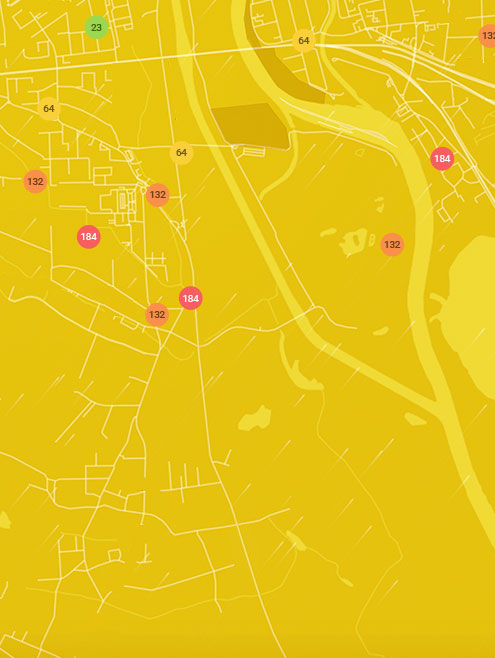Get a monitor and contributor to air quality data in your city.
9K people follow this station






AIR QUALITY DATA CONTRIBUTORS
Find out more about contributors and data sources| Weather | Scattered clouds |
| Temperature | 53.6°F |
| Humidity | 52% |
| Wind | 7 mp/h |
| Pressure | 29.8 Hg |
| # | city | US AQI |
|---|---|---|
| 1 | Budapest, Central Hungary | 53 |
| 2 | Pecs, Southern Transdanubia | 50 |
| 3 | Debrecen, Northern Great Plain | 35 |
| 4 | Szazhalombatta, Central Hungary | 26 |
| 5 | Miskolc, Northern Hungary | 13 |
(local time)
SEE WORLD AQI RANKING
| # | station | US AQI |
|---|---|---|
| 1 | Szeged | 53 |
(local time)
SEE WORLD AQI RANKINGUS AQI
53
live AQI index
Moderate
| Air pollution level | Air quality index | Main pollutant |
|---|---|---|
| Moderate | 53 US AQI | PM2.5 |
| Pollutants | Concentration | |
|---|---|---|
| PM2.5 | 13.1µg/m³ | |
| PM10 | 13.6µg/m³ | |
| O3 | 39.1µg/m³ | |
| NO2 | 9.8µg/m³ | |
| SO2 | 47.7µg/m³ | |
| Sensitive groups should reduce outdoor exercise | |
| Close your windows to avoid dirty outdoor air GET A MONITOR | |
| Sensitive groups should wear a mask outdoors GET A MASK | |
| Sensitive groups should run an air purifier GET AN AIR PURIFIER |
| Day | Pollution level | Weather | Temperature | Wind |
|---|---|---|---|---|
| Monday, Apr 22 | Good 26 AQI US | |||
| Tuesday, Apr 23 | Good 32 AQI US | |||
| Wednesday, Apr 24 | Good 30 AQI US | |||
| Today | Moderate 53 AQI US | 55.4° 37.4° | ||
| Friday, Apr 26 | Good 39 AQI US | 62.6° 39.2° | ||
| Saturday, Apr 27 | Good 39 AQI US | 66.2° 46.4° | ||
| Sunday, Apr 28 | Good 50 AQI US | 71.6° 50° | ||
| Monday, Apr 29 | Good 39 AQI US | 73.4° 53.6° | ||
| Tuesday, Apr 30 | Good 17 AQI US | 71.6° 53.6° | ||
| Wednesday, May 1 | Good 16 AQI US | 69.8° 51.8° |
Interested in hourly forecast? Get the app
Contributor
Government Contributor

1 station
2 Data sources